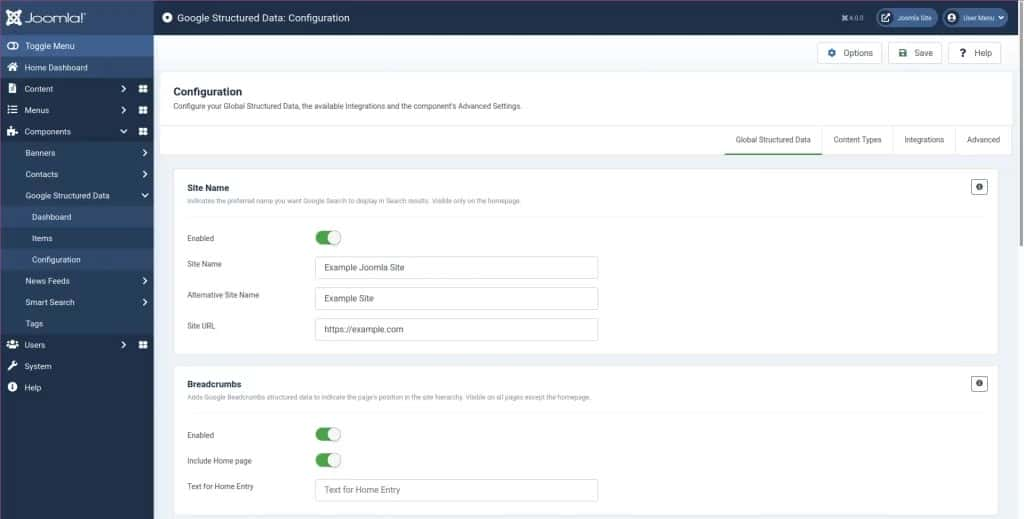What is Schema Markup & Why it’s Important in SEO?
In any case, regarding SEO, staying ahead of the curve can be considered a prime factor. One of the tools gaining massive traction in recent years is schema markup. Though it seems to be picking up pace, many still ask the question, “What is schema markup?” and, more importantly, “Why does schema markup in SEO matter so much?”
In this article, there will be answers to these questions, expounding on how schema markup can improve your website’s visibility and performance within SERPs.
What is Schema Markup?
Schema markup, or structured data, is a form of microdata that helps search engines understand and categorize web content. Injected into a webpage, it creates an extended description known as a rich snippet, which can enhance search results. Developed by Schema.org, schema markup represents a collaborative effort among Google, Bing, Yahoo!, and Yandex to establish a common vocabulary for structured data markup on the web, ultimately improving SEO and click-through rates.
Basically, schema markup adds extra code to your website, making search engines return informative results to users. You add an extra layer of information on top of the existing content, so it’s easier for search engines to understand the context of your content. Think of this as a translator between your website and search engines, ensuring those latter get context and specific details.
A good Joomla schema plugin can help your brand stand out in search engine results. A search engine optimization (SEO) schema shows important info for a notable person, brand, or website alongside search results. Here’s a screenshot of our schema in Google search results.
The most common method for creating a schema is with a JSON LD code block in your website’s head section. Within a few weeks, Google and other search engines may choose to add your schema in search results for your business.
Google Structured Data is a free Joomla SEO extension that does all of this for you in the Joomla dashboard.
How does structured data work?
This piece of code describes the main entities found on the page in a format that is easily digestible by Google and other search engines. So once this page is crawled, Google can tell what’s the name of the article, who’s the author, and when it was published.
Apart from improving the way we communicate information to the major search engines, adding structured data to a web page brings a slew of benefits that can directly impact your organic traffic and appearance in search.
First, you can get a rich snippet with comprehensive information about your product, for instance.


And the topmost benefit of structured data is that it helps you build entities and relations between them. This is especially important in light of the upcoming Google MUM update.
The list goes on, and I’ll touch on more benefits for each type of Schema later in this guide.
How to implement structured data on your site?
When it comes to structured data implementation, you have two options:
- Markup generators (good for beginners)
- Manual markup
Markup generators
Schema markup generators let you implement structured data without any coding skills at all.
In most cases, SEOs and website owners (and we are not an exception) use Google Structured Data Markup Helper. It offers 12 Schemas, which is more than enough for the starters.
How do structured data generators work?
The process is really simple — you just choose the structured data type and mark all the needed elements on your web page.
And the topmost benefit of structured data is that it helps you build entities and relations between them. This is especially important in light of the upcoming Google MUM update.
The list goes on, and I’ll touch on more benefits for each type of Schema later in this guide.
Below we’ll cover how to use the Google Structured Data free plugin.
Using the Joomla Schema Plugin for Better SEO
- Follow the “Download” link at extensions.joomla.org/extension/google-structured-data/.
- Select “Download Free” to create a free account on the site.
- Follow the link in the verification email.
- Download the Joomla plugin. Here are the checksums for Google Structured Data Free
- Log into your Joomla 4 administrator dashboard (e.g. https://example.com/administrator).
- On the left, select “System.”
- Under “Install,” select “Extensions.”
- Select “Or browse for file” and the zip file. You’ll see the following notifications:
Novarain Framework v4.6.24 (System Plugin) has been successfully installed
Google Structured Data v1.0 (Component) has been successfully installed
Google Structured Data v4.8.8 (System Plugin) has been successfully installed - On the left, select “Components,” “Google Structured Data,” and “Configuration.”
- Fill out the page with all relevant information you’d like to show in your SEO schema.

- Select “Save” at the top. The “Content Types” and “Integrations” tabs show Joomla 4 features for the paid version.
- On the left, select “Components,” “Google Structured Data,” and “Dashboard.”
- Select “Test” to check your Joomla schema with Google’s Rich Results test. Or test your schema with sites below:



